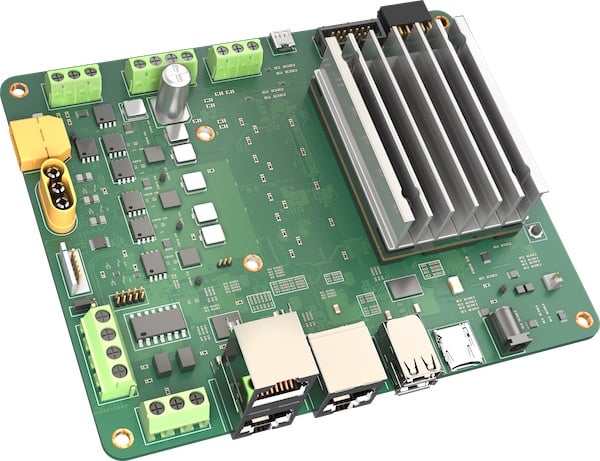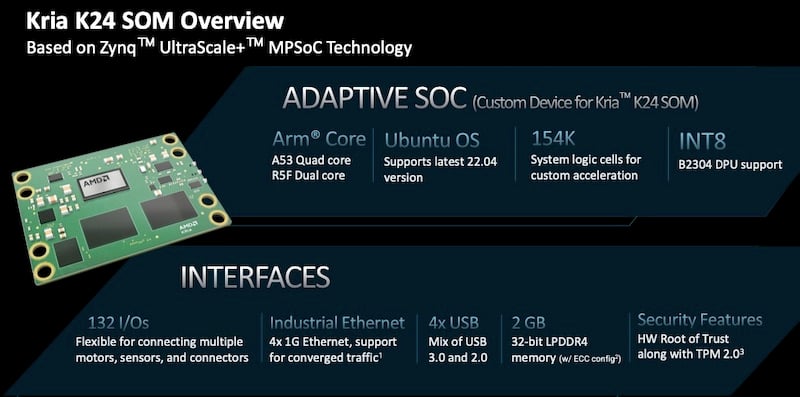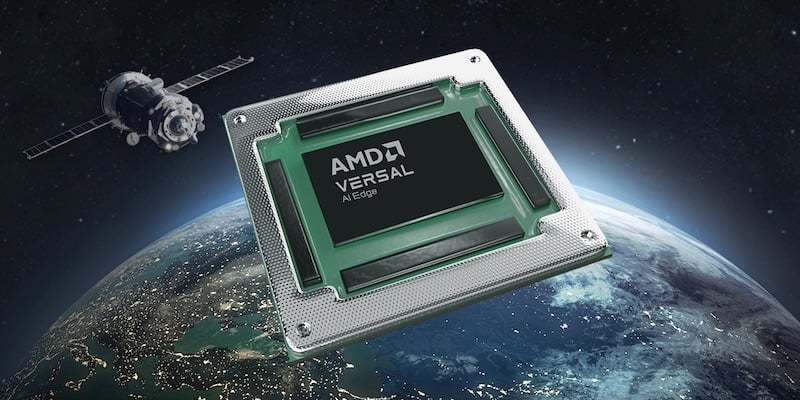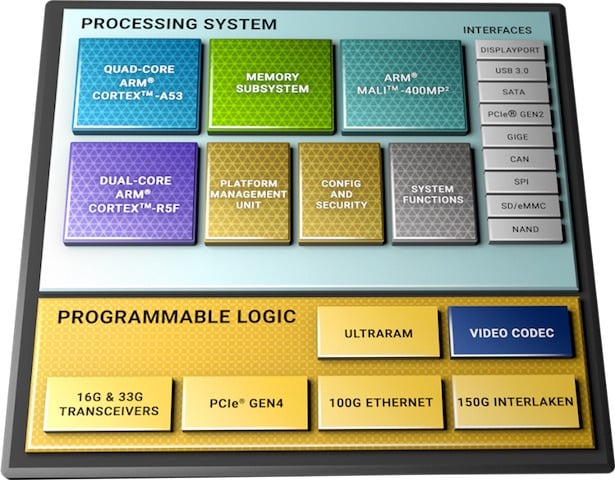AMD Aims Its Adaptive SoCs at Space Systems, Motor Control, and DSP
For designers needing pure performance and high efficiency, AMD’s latest adaptive SoCs provide computing power for new applications.
Adding new use cases to its adaptive SoC portfolio, AMD has recently announced two new adaptive SoCs built to address the high-performance needs for industrial and space applications. It’s no secret that FPGA-based computation has rapidly become a key contender for low latency and high bandwidth computation, and AMD’s latest devices extend the usability for programmable logic to several new environments previously out of reach.

AMD’s latest FPGA-based reference boards, like this KD240 Drives starter kit, give designers the ability to rapidly deploy programmable logic into industrial DSP and motor control applications. Image used courtesy of AMD
Each new AMD device targets different applications, and as such sport different specs that make them attractive to different designers. In this article, we will break down these specs, as well as give readers the information they need to determine how they may make use of the latest AMD systems.
Industrial Grade DSP with the K24
Targeting industrial-grade applications, this week AMD released its Kria K24 System-on-Module (SoM) to give designers additional performance. This module, coupled with the newly released KD240 motor driver kit, allows designers to rapidly turn their programmable logic systems into high-efficiency motor control and DSP systems.
The K24 SoM makes use of a Zynq UltraScale+ MPSoC that combines traditional processors with programmable logic to give designers the versatility needed to engineer complex control and DSP algorithms without requiring a major design effort.

The Kria K24 builds upon its predecessor by including a Zynq SoC and necessary peripherals to quickly develop DSP and motor control applications in a pin-compatible format. Image used courtesy of AMD
Within the K24 SoM lies Arm Cortex processors, graphics processing, and 154K programmable logic cells for designers to employ. The SoM is pin-compatible with its predecessor, which All About Circuits covered earlier this year, and can be used with AMD’s “App Store for edge applications” to quickly get designers up and running.
The K24 and KD240 are available now for direct order, with the industrial version of the K24 shipping in Q4 2023.
Adaptive SoCs… In Space!
Moving toward applications further at the edge, today AMD has announced its Versal AI Edge XQRVE2302, an adaptive SoC qualified for space applications in an extremely small package. For designers working on spacefaring electronics, the new performance and reduction in board area can be critical toward saving power, size, and mass for space flights.
Compared to AMD’s previous space-qualified adaptive SoC, the XQRVE2302 reports a 75% savings in both board area and power, making it a major step toward implementing high-performance computation in space. The XQRVE2302 also includes AMD AI Engine (AIE) technology to accelerate AI/ML applications, with a particular focus on INT4 and BFLOAT16 datatypes for inferencing.

The XQRVE2302 provides satellite designers with more processing power in a smaller package while consuming less power, making it particularly beneficial for space applications. Image used courtesy of AMD
The XQRVE2302 also supports unlimited reprogramming during development and after deployment, even in radiation-filled astral environments. This will ultimately allow designers to both accelerate the initial deployment without being locked into a subpar communications or sensing processing flow.
Commercial preproduction devices are currently available, with flight-qualified parts expected in late 2024.
Accelerating FPGA Design
Though FPGAs may not be close to reaching the popularity of microcontrollers for low-end processing, for applications such as industrial DSP, motor control, or space-grade communications and sensing, FPGAs shine due to their intrinsically better latency and throughput. AMD’s latest FPGA-based solutions highlight this and give developers more options when selecting devices for their own applications.

The AMD adaptive SoC block diagram highlights the versatility of SoC-based FPGAs, giving designers the familiarity of MPU programming and the power of programmable logic in one package. Image used courtesy of AMD
As the devices become more widely available, it will be interesting to see how developers make use of the improved throughput, power, and board efficiency. Coupled with the trend toward increasing commercial satellite launches, the space-grade adaptive SoCs could see a considerable amount of use.







